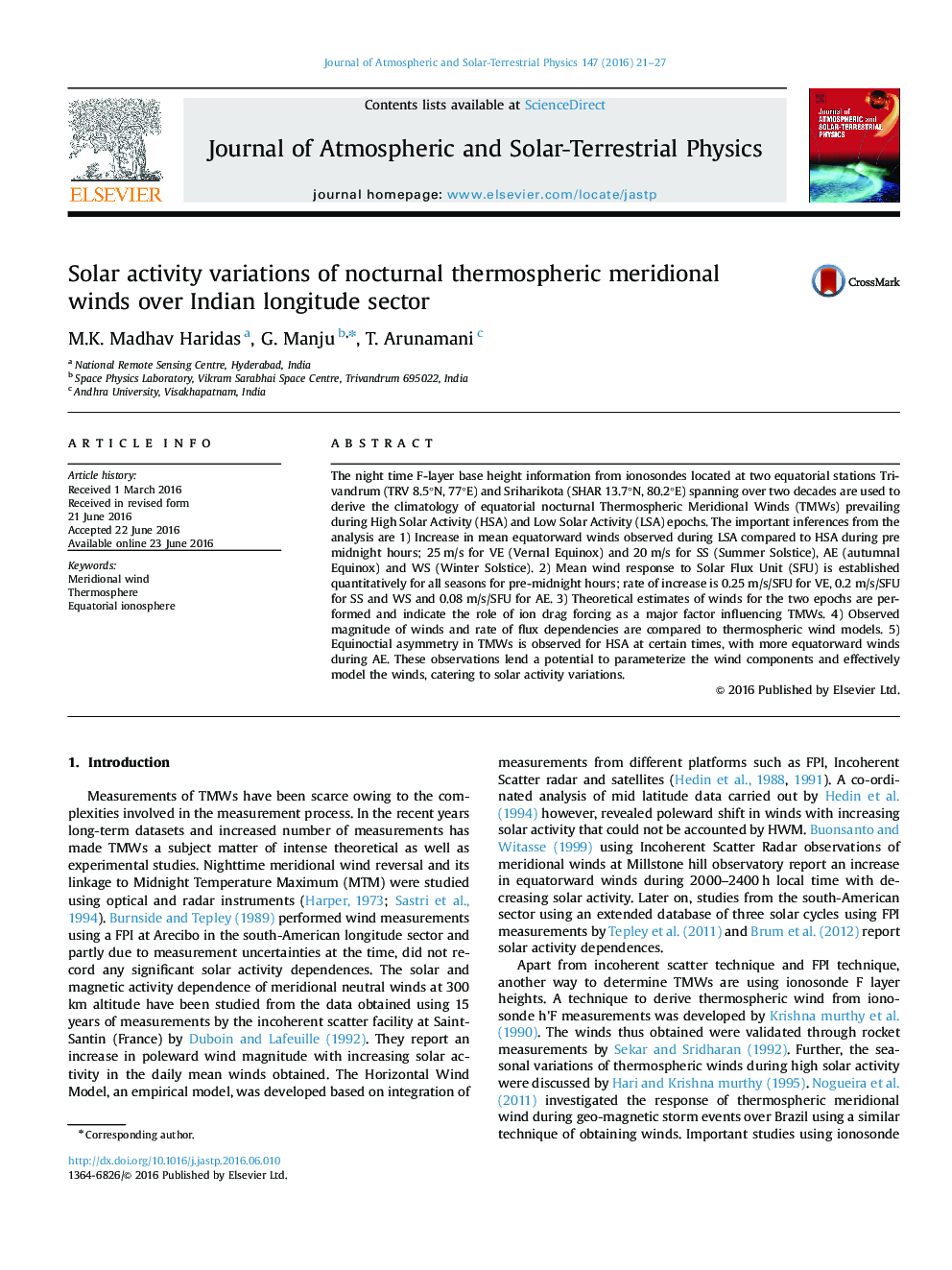| Article ID | Journal | Published Year | Pages | File Type |
|---|---|---|---|---|
| 1776171 | Journal of Atmospheric and Solar-Terrestrial Physics | 2016 | 7 Pages |
•Solar activity variations of nocturnal thermospheric meridional winds established in Indian sector.•Equatorward wind magnitudes increase with decreasing solar activity in pre-midnight sector.•Ion-drag identified as a major source of variations and the observations compared with model data.
The night time F-layer base height information from ionosondes located at two equatorial stations Trivandrum (TRV 8.5°N, 77°E) and Sriharikota (SHAR 13.7°N, 80.2°E) spanning over two decades are used to derive the climatology of equatorial nocturnal Thermospheric Meridional Winds (TMWs) prevailing during High Solar Activity (HSA) and Low Solar Activity (LSA) epochs. The important inferences from the analysis are 1) Increase in mean equatorward winds observed during LSA compared to HSA during pre midnight hours; 25 m/s for VE (Vernal Equinox) and 20 m/s for SS (Summer Solstice), AE (autumnal Equinox) and WS (Winter Solstice). 2) Mean wind response to Solar Flux Unit (SFU) is established quantitatively for all seasons for pre-midnight hours; rate of increase is 0.25 m/s/SFU for VE, 0.2 m/s/SFU for SS and WS and 0.08 m/s/SFU for AE. 3) Theoretical estimates of winds for the two epochs are performed and indicate the role of ion drag forcing as a major factor influencing TMWs. 4) Observed magnitude of winds and rate of flux dependencies are compared to thermospheric wind models. 5) Equinoctial asymmetry in TMWs is observed for HSA at certain times, with more equatorward winds during AE. These observations lend a potential to parameterize the wind components and effectively model the winds, catering to solar activity variations.
